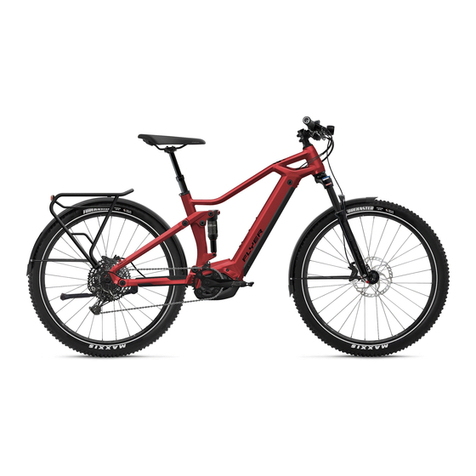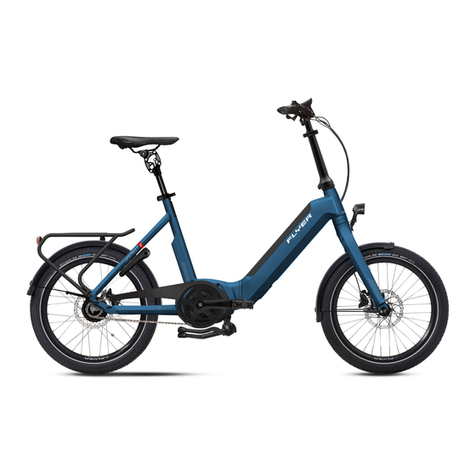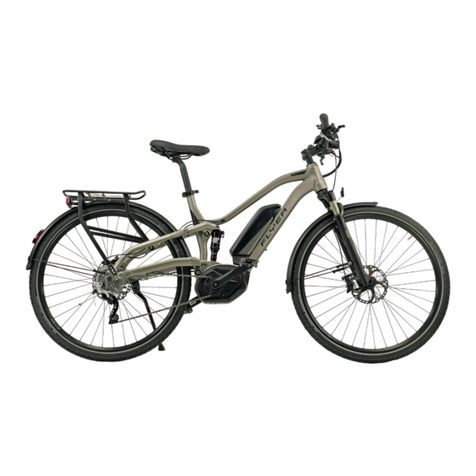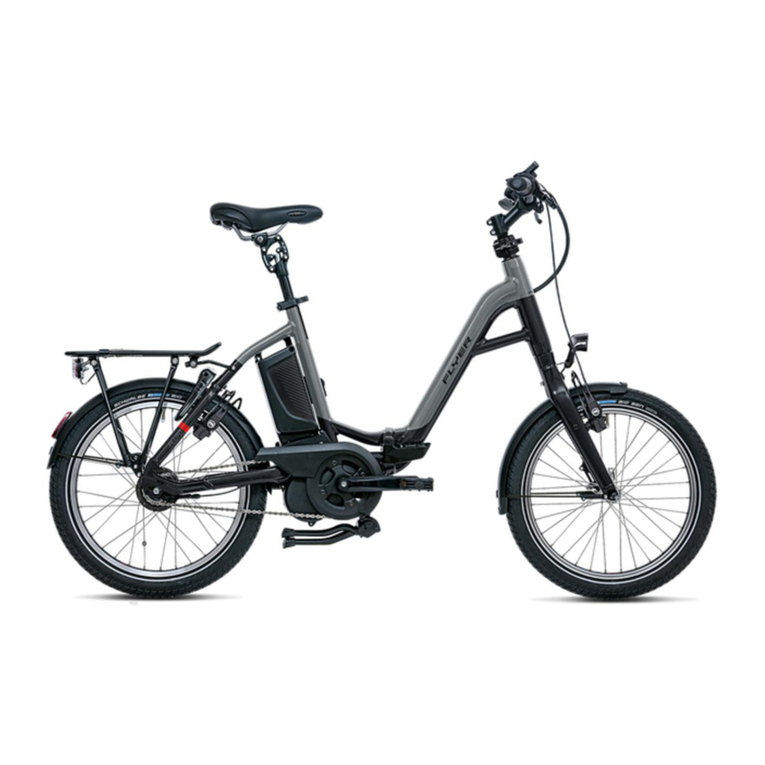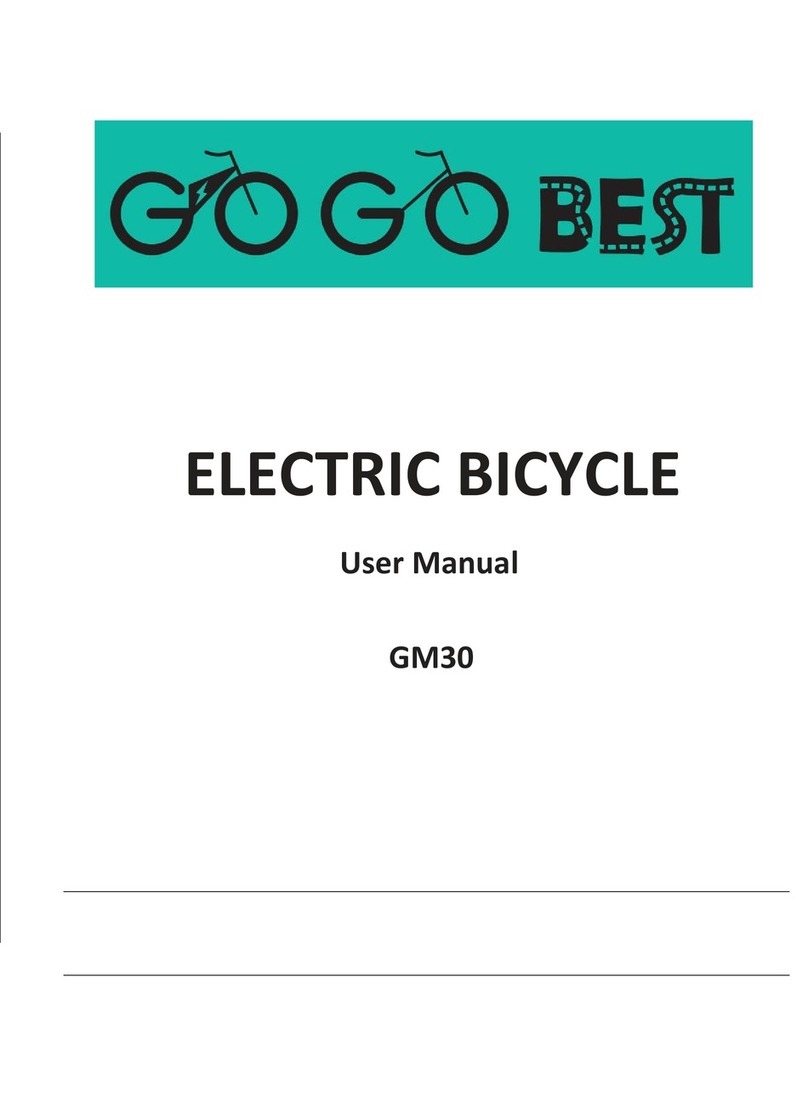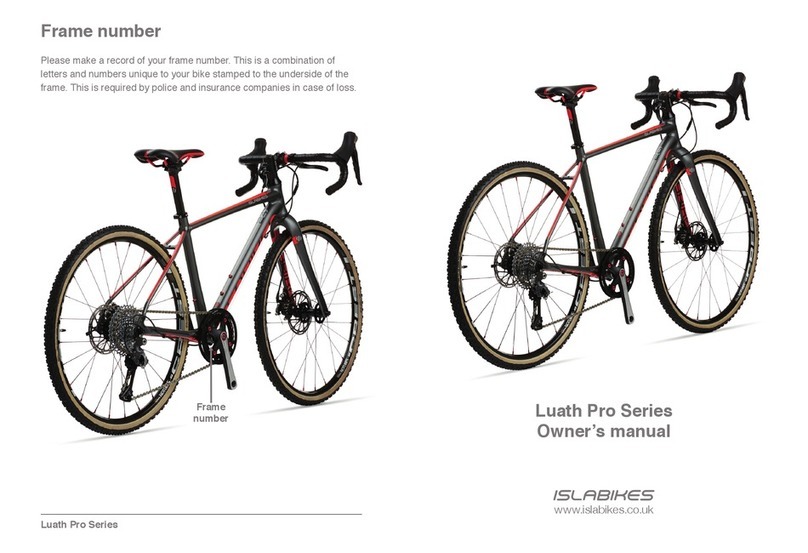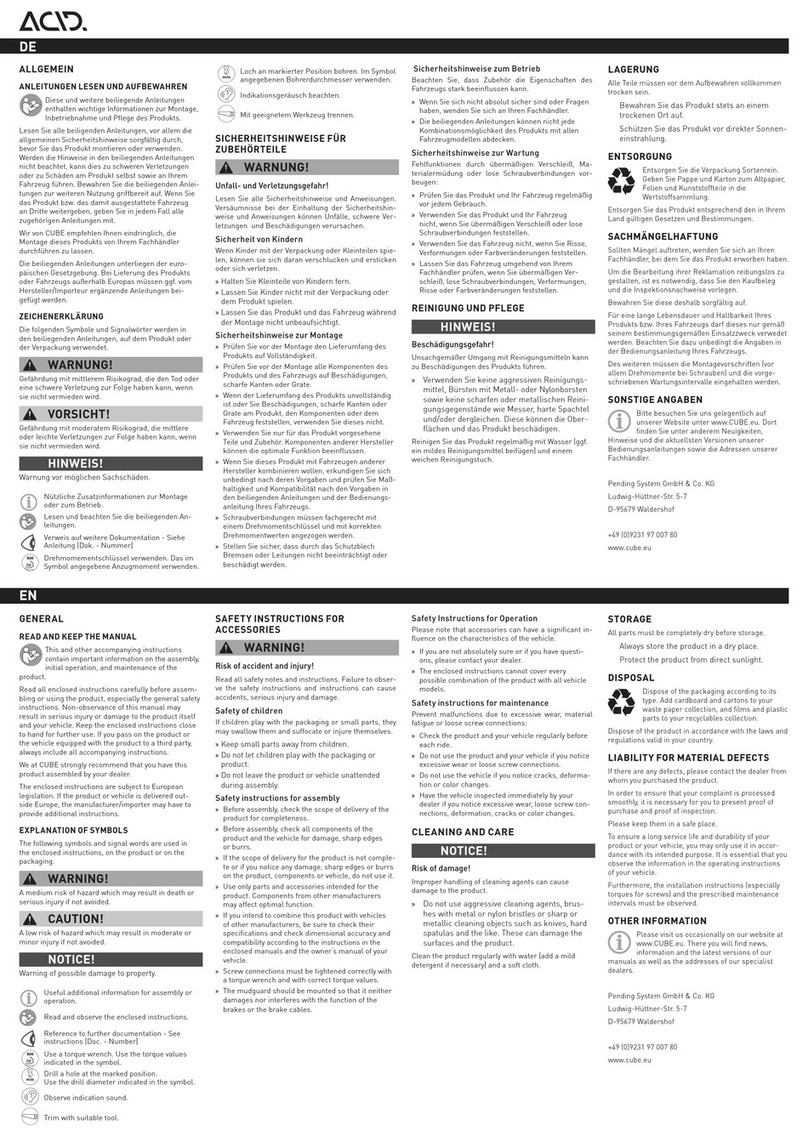
Danger: This sign represents increased risk of falling,
the possibility of injuries and harm to others. Your FLYER
is equipped with modern, complex technology. It has to be
handled with knowledge, experience and special tools. Leave any
work on it to your FLYER dealer. We can only describe the most
important points in these instructions. Further information and
instructions are provided by the component manufacturers. They
are attached to these instructions and must be adhered to as well.
Please note: You should definitely talk to your FLYER dealer if any-
thing is unclear to you.
Adhere to the fastening torques: The exact fastening
torque must be adhered to at each screw connection. This
requires a special tool called a torque spanner. Leave this
work to your specialist dealer when you do not have the required
tool. Parts that have been fastened with the wrong fastening
torque may break or come loose and cause severe falls.
Note: Here you can find IMPORTANT SPECIFICATIONS and
information about the best use of your FLYER
Children may only ride with an E-Bike when they have
reached the required age and have the required licence!
The specific fastening torque is either printed on the component
or provided in the Chapter "Fastening torques".
Attention: This is a WARNING about possible damage to
goods or environmental damage
These original operating instructions contain the most important infor-
mation required to familiarise yourself with your new FLYER, to get to
know its technology, to attend to safety aspects and prevent damage to
persons, goods and the environment. Please retain these operating in-
structions, keep them at hand and take note of the information. Forward
these instructions along with your FLYER if you lend it to other people. You
will repeatedly encounter the following symbols:
These symbols will from here on be used without any further explanations,
but in each case will represent the contents and risk listed above. The area
belonging to the respective symbol is framed as shown above.
Please read the chapters entitled "Before the first
ride" and "Before each ride" in these instructions.
It is essential that you perform the tests described
in this text. Protect yourself and others by behaving
safely and responsibly and always consider the risks
that other road users on bicycles are exposed to. Al-
ways wear a well-fitting and suitable helmet. Get in-
formation on how to make a helmet fit correctly.
Seeing and being seen is important. Wear light-coloured clothing or
clothing with reflective elements when riding. You might have to use trou-
ser clamps. And: The soles of your shoes should be rigid and slip-proof.
Never ride with your hands off the handle bars.
Note for all parents and guardians:
Your responsibility as a guardian includes responsibility for the actions
and the safety of your child - including responsibility for the technical
state of his bicycle and its suitability for the rider.
Ensure that your child has learned to use his or her E-bike safely and
responsibly – preferably in the environment where he or she will ride the
E-Bike.
I. Safety instructions
C2

